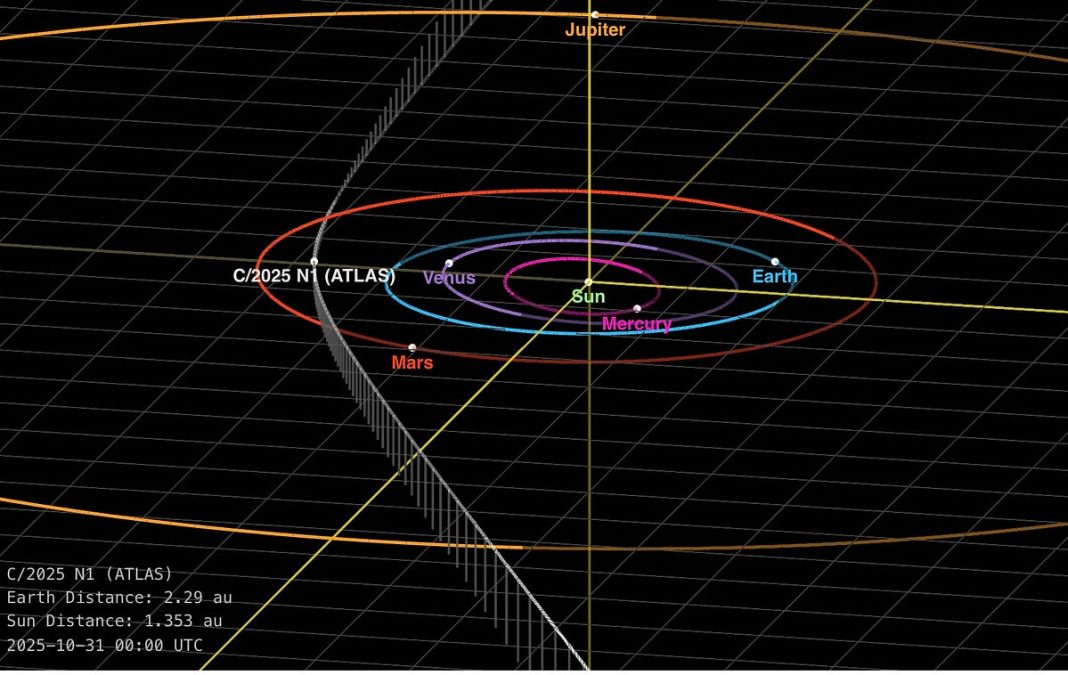The cosmos continually throws curveballs, and few phenomena capture our imagination quite like a mysterious comet. Remember Comet ATLAS? It was once hailed as the potential “Great Comet of 2020,” only to mysteriously break apart and then, bafflingly, speed up as it neared the Sun. This unexpected acceleration sent ripples through the astronomical community, prompting head-scratching and a search for answers. Enter Avi Loeb, a name synonymous with pushing the boundaries of conventional astrophysical thought, who offered a fascinating, albeit provocative, explanation for ATLAS’s solar sprint.
The Comet’s Unconventional Finale
Comets, those icy wanderers, typically brighten and accelerate as they approach the Sun due to outgassing – frozen volatiles turning directly into gas, acting like tiny jet thrusters. But Comet ATLAS presented a peculiar challenge. It fragmented significantly before its closest approach to the Sun, shattering into multiple pieces. This early demise made its subsequent acceleration even more perplexing. How could a fragmented comet gain speed if its primary engine – extensive outgassing – was already severely compromised or dispersed?
Standard models struggled to fully account for the observed acceleration in light of its fragmentation. It wasn’t just a minor tweak; ATLAS was behaving in a way that defied easy categorization, leaving many wondering if we truly understood the inner workings of these celestial iceballs as well as we thought. It became a perfect cosmic riddle, inviting a fresh perspective.
Loeb’s Radical Proposal: Porosity and Radiation Pressure
Avi Loeb, known for his readiness to explore explanations beyond the textbook, proposed an intriguing hypothesis. He suggested that the fragmented pieces of Comet ATLAS weren’t dense, solid chunks, but rather highly porous, low-density “fluffy” structures. Imagine a cosmic snowball made of incredibly delicate, airy material, almost like cotton candy.
The key to his idea lies in radiation pressure. We know sunlight exerts a tiny, almost imperceptible pressure on everything it hits. For most objects, this pressure is negligible. However, if the fragments of ATLAS were incredibly small and porous, their surface area-to-mass ratio would be exceptionally high. In such a scenario, the constant push from solar photons – the very particles of light – could act as a significant driving force. It would, in effect, gently push these lightweight, ethereal comet pieces, causing them to accelerate faster than traditional outgassing alone could explain.
This explanation, while unconventional, aligns with Loeb’s overarching philosophy: when observations don’t fit established theories, we should be open to novel interpretations, even if they challenge our preconceptions. As one hypothetical astronomer might muse, “It’s certainly a departure from the textbooks, but you have to admire Loeb’s willingness to challenge assumptions when the data doesn’t fit the expected narrative.”
Beyond ATLAS: A New Lens for Cosmic Exploration
Loeb’s hypothesis for Comet ATLAS isn’t just about one celestial object; it’s about refining our understanding of cometary composition and dynamics. If comets can indeed be highly porous and susceptible to radiation pressure in such a pronounced way, it opens doors to understanding other enigmatic objects. It suggests that there might be a spectrum of cometary structures we haven’t fully characterized, some far lighter and more fragile than previously assumed.
This episode reminds us that science is a continuous journey of discovery, where anomalies are not just problems to be solved, but invitations to expand our knowledge. Whether Loeb’s theory proves to be the definitive answer or sparks further investigation, it underscores the importance of critical thinking and the courage to look for answers in unexpected places when the universe decides to surprise us.
*




